Lots of interesting abstracts and cases were submitted for TCTAP & AP VALVES 2020 Virtual. Below are accepted ones after thoroughly reviewed by our official reviewers. Don¡¯t miss the opportunity to explore your knowledge and interact with authors as well as virtual participants by sharing your opinion!
* The E-Science Station is well-optimized for PC.
We highly recommend you use a desktop computer or laptop to browse E-posters.
CASE20191114_013
| STRUCTURAL HEART DISEASE - Valvular Intervention: Aortic | |
| Trans-Catheter Aortic Valve Implantation in a Severe Calcific Aortic Stenosis | |
| Shuvanan Ray1 | |
| Fortis Hospital, India1, | |
|
[Clinical Information]
- Patient initials or identifier number:
SKR
-Relevant clinical history and physical exam:
71 years old male presented in emergency with chest pain and severe shortness of breath. On investigation, his BP was 90/50 mm/Hg. Patient was sweating and was restless. On investigation murmur was found.
-Relevant test results prior to catheterization:
ECG showed WML. Blood report showed type II Diabetes Mellitus and hypothyroidism.Echo showed severe calcific aortic stenosis with peak gradient of 56mm/Hg and mean gradient of 43 mm/Hg and severe LV systolic dysfunction. Blood report showed chronic kidney disease with CIN. CT scan showed benign prostatic hyperplasia and right femoral 6.4 mm and large common iliac and clean aorta.
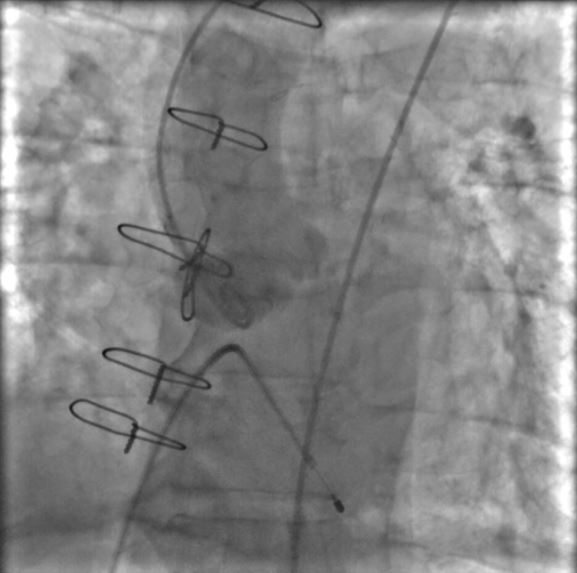 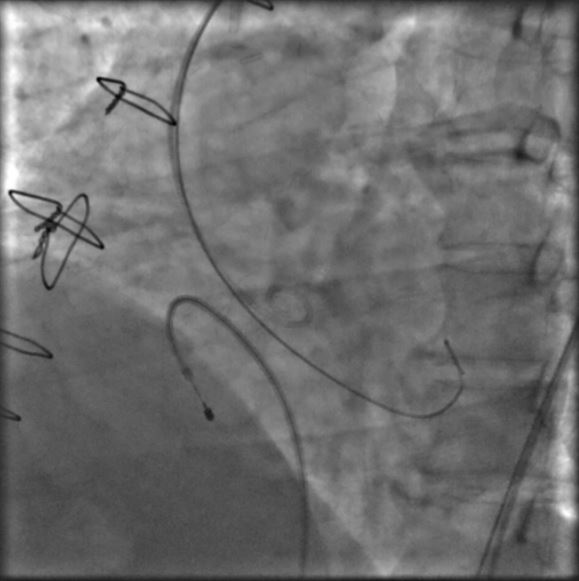 - Relevant catheterization findings:
Angiogram showed non critical coronary artery disease and patent graft done on 2014. Aortagram showed normal coronary heights and clean ascending, descending and aortic root. Peripheral angiogram showed clean right femoral and common femoral artery.
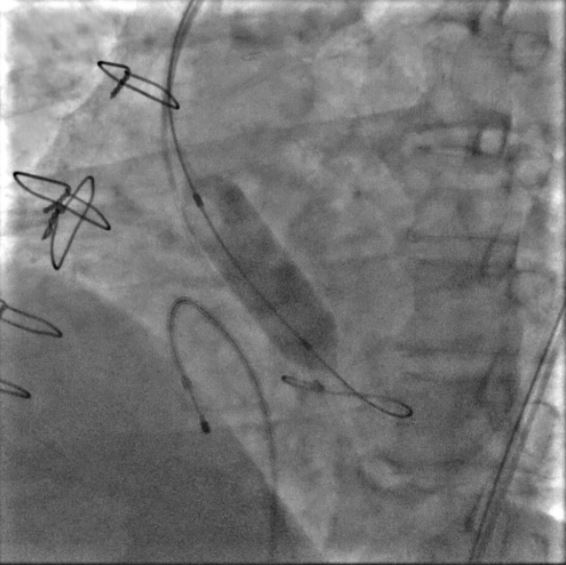 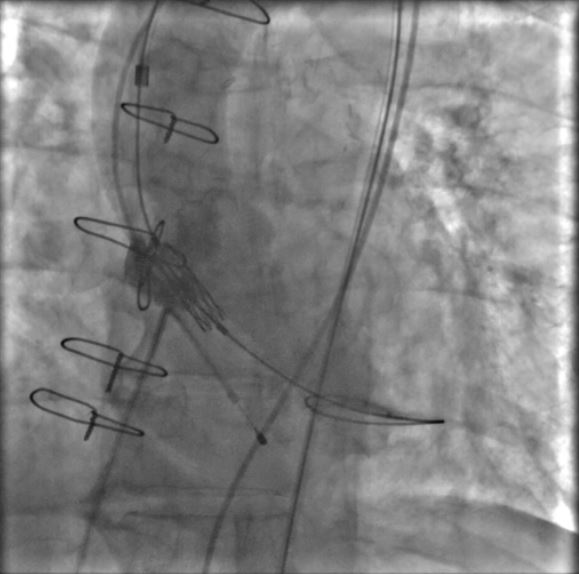 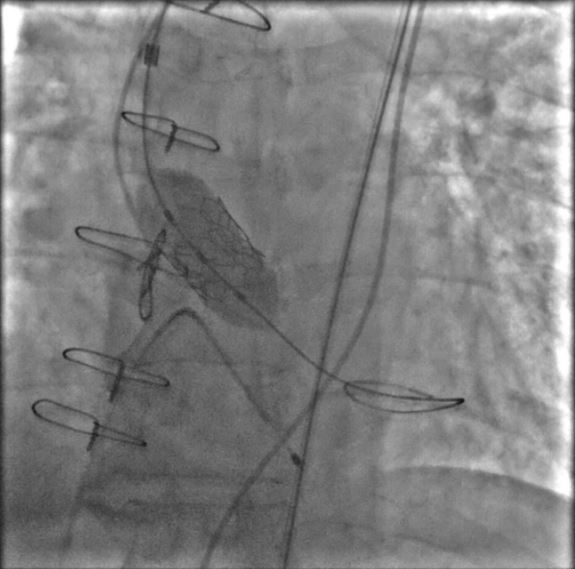 |
|
|
[Interventional Management]
- Procedural step:
Right femoral artery was accessed with 22 Fr arterial sheath after cut down. Aortic valve was crossed with wire with the help of AL1 diagnostic catheter and dilated with 16 mm Mammoth Balloon at 7 atm. Then the MYVAL valve (20 mm- Meril). Balloon expandable heart valve is placed and dilated successfully. Check angiogram showed mild aortic regurgitation. Further balloon dilation done which leads to regurgitation becoming minimal. Access site is sutured with 3 PROGLIDE 6 F (2mm) material. Procedure was successful and uneventful.
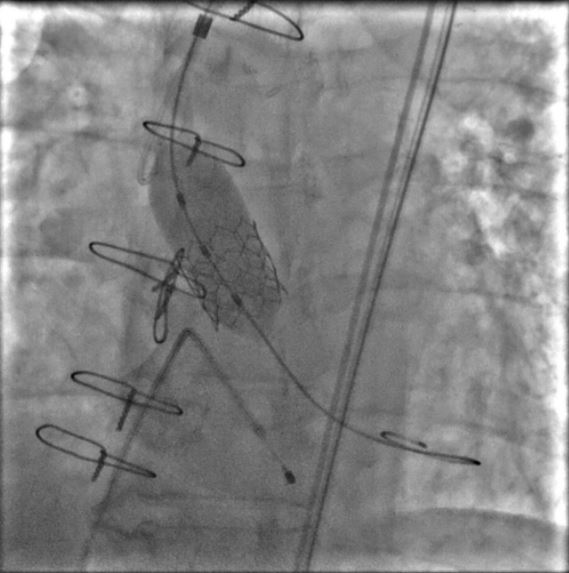 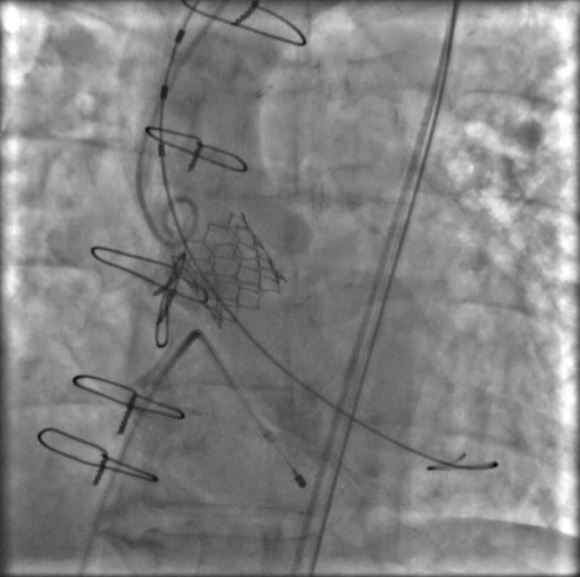 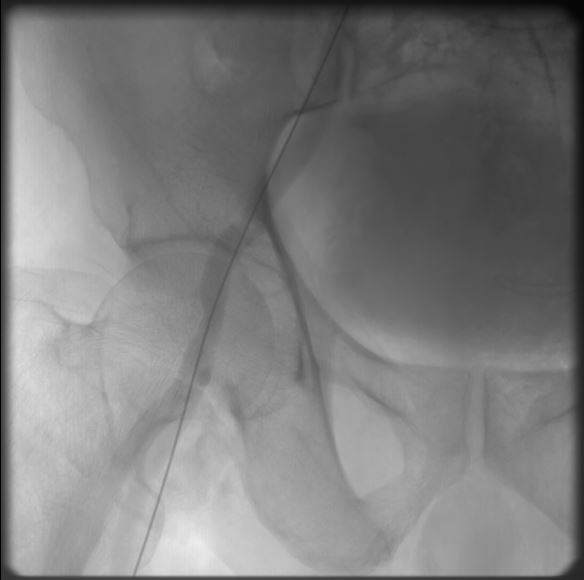 - Case Summary:
TAVR is a suitable alternative of SAVR specially after PARTNER trial where benefit of TAVR was shown in severe, intermediate and mild aortic stenosis.Proper planning and Heart Team approach is crucial to make the procedure safe and effective to patient. Finally large clinical trial is required to establish the safety & benefit between balloon expandable and self-expandable valves.
|
|